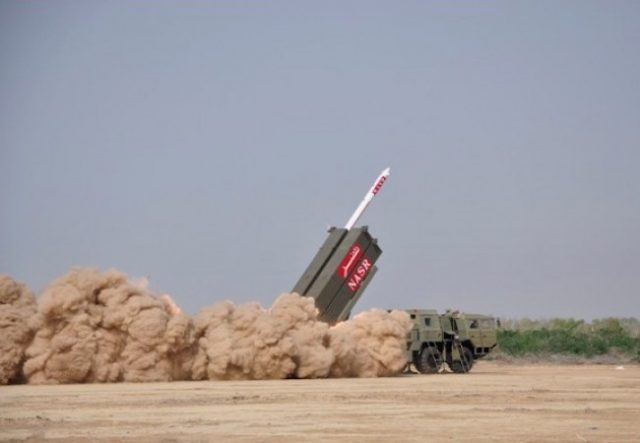The 21st century is the era of emerging technologies that play a vital role in the development, peace, and prosperity of any nation. Besides, the peaceful use of nuclear technology is a significant factor in socio-economic development. The revolution in civil nuclear technology impacts every aspect of life and has proven itself as a guarantor of national security, sovereignty, and territorial integrity. The “Atoms for Peace” concept was introduced by the then US President Eisenhower during a speech at United Nations General Assembly (UNGA) in 1953, aiming at the importance of nuclear energy utilization in different areas like power generation, agriculture, pharmaceuticals, etc. as well as sharing of non-military technology, training, and materials with countries around the world.
After getting inspiration from President Eisenhower’s “atoms for peace,” Pakistan started its nuclear program in 1954. The nuclear program has been a major national interest for all regimes, including military and democratic. They have functioned effectively and are measured as an important element in covering the energy needs of Pakistan, particularly focusing on the civil nuclear energy program and energy sector and contributing to obtaining sustainable development goals (SDGs).
Read more: Pakistan nuclear technology helped country earn $7.4 bn
The importance of Peaceful nuclear technology
Peaceful nuclear technology has substantial application in several areas, including agriculture, medical diagnostic, treatments, food irradiation, scientific research, and industry. The most important feature of peaceful nuclear technology in the energy sector is an environment-friendly, economical, and clean source of energy. Various energy experts in Pakistan emphasized the need to reduce dependence on fossil fuels and unleash the potential of nuclear energy. In this context, Pakistani policymakers actively sought international cooperation in civil nuclear technology in accordance with nuclear non-proliferation standards.
China-Pakistan nuclear cooperation started in the 1970s based on the bilateral strategic cooperation between China and Pakistan. At the same time, Islamabad sought help to build its nascent civil nuclear program to tackle the nationwide energy crisis. China supports Pakistan’s nuclear program in developing commercial nuclear power plants and providing nuclear power technology in order to bridge the gap between energy production and consumption.
On September 15, 1986, Pakistan and China signed a landmark agreement on nuclear technology. The bilateral agreement has been following the construction of commercial nuclear power plants at Chashma, Punjab Pakistan. These nuclear power plants were built, owned, and operated by both public and private organizations for commercial use.
In 2013, in continuation of a series of nuclear energy agreements and to further boost Sino-Pak nuclear cooperation, both countries agreed to construct two other nuclear power plants in Karachi, known as Karachi Nuclear Power Plant (K-2 and K-3), each having a total capacity of 1100 MW. The other five operating power plants, K-1 C1, C2, C3, and C-4) have a total capacity of 1318 MWe.
Read more: 100 million deaths and more: The cost of an India-Pakistan nuclear war
These plants help to add more nuclear power to their existing energy
To overcome the rising energy and economic issues, Pakistan is trying to enhance the role of nuclear and renewable energy sources in the overall energy combination. Pakistan aims to generate 8,800 MWe of electricity using nuclear energy. Subsequently, in November 2017, China and Pakistan signed an agreement to build Chashma nuclear power plant (C-5). Though the building of nuclear energy plants represents only a minor part of the total energy, it helps in developing the nuclear energy generation capacity of Pakistan and combining it with other renewable energy resources, and assists in lessening the country’s energy crunch and positively impacting the environment.
On March 18, 2021, in continuation of Sino-Pak nuclear cooperation, Pakistan Atomic Energy Commission (PAEC) connected the 1100 MW reactor (KANUPP-2) to the national power grid with the help of the China National Nuclear Cooperation (CNNC). K-2 nuclear power project would provide a more reliable and commercial source of power.
On, September 8, 2021, another agreement has been signed between Pakistan Atomic Energy Commission (PAEC) and China Zhengyuan Engineering Cooperation. The agreement aimed to deepen the nuclear energy cooperation and build and uphold Pakistan’s nuclear power projects.
This will contribute to the economic development of the country
To contain its looming energy crisis, Pakistan has been significantly expanding the role of nuclear power as an affordable alternative to fossil fuels. Therefore, the transition toward more reliable, modern, and cost-effective energy would lead Pakistan towards a more sustainable and realistic future. Therefore, China-Pakistan civil nuclear cooperation leads to acquiring development in the fields of agriculture, energy, industry, health, and medicine, and further advances Pakistan’s peaceful nuclear program.
Read more: Pakistan’s nuclear program to stall as PAEC defaults on payments
China has repeatedly stated that China-Pakistan nuclear cooperation is exclusively for peaceful purposes. The cooperation between the two friendly neighbors brings economic prosperity and also helps to contain the spread of terrorism in Pakistan. Conclusively, Sino-Pakistan cooperation in the field of civil nuclear technology aims to achieve UN sustainable development goals (UNSDGs) and augments a new narrative that peaceful nuclear technology plays an important role in national development.
Dr. Muhammadi is currently working as an Associate Director of Research at the Center for International Strategic Studies (CISS), Islamabad, Pakistan. He holds a Ph.D. In Politics and International Relations from Shanghai International Studies University, Shanghai, PR China.
The views expressed in this article are the author’s own and do not necessarily reflect the editorial policy of Global Village Space.














